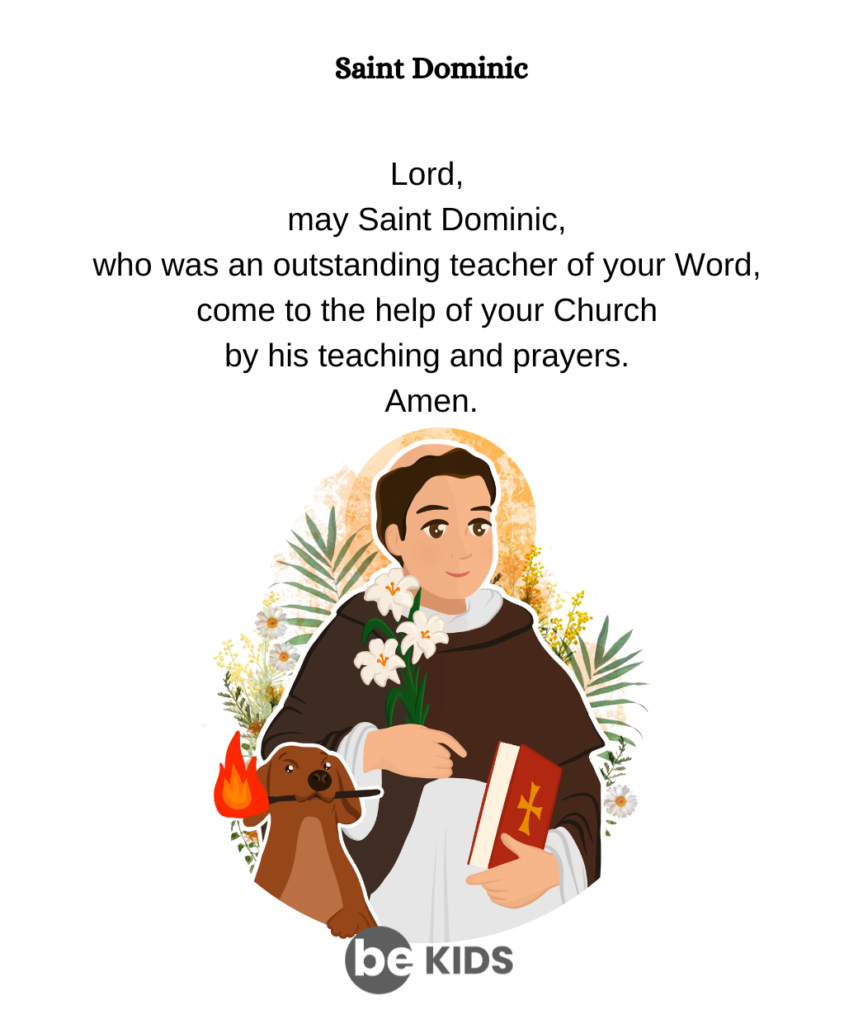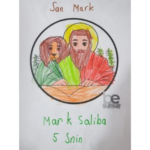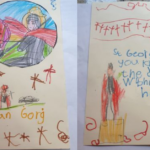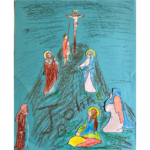
St. Dominic is often depicted with a dog carrying a torch in its mouth, at his heels. This rather strange image has its root in a legendary experience of Dominic’s mother just before he was born. The legend says that while on a pilgrimage to the Abbey of Silos, she had a dream of a dog leaping from her womb and running forward with a torch in its mouth, as she heard a voice saying that her son would set the world on fire!
Dominic was born in 1170, at Calaroga, Old Castile in Spain, in a family of Spanish nobility. His father was Felix de Guzman, his mother, Joanna of Aza was also beatified. His brother Manes, became a Friar Preacher and his brother Antonio became a secular priest dedicating his life to the caring of the sick.
Dominic’s maternal uncle, Archpriest Guzman d’ Izan, took care of his elementary education. Then he moved to the University of Palencia where he pursued higher studies for 10 years. When a famine struck Spain, Dominic sold his books and everything he owned to buy food for the poor and homeless. Another time he attempted to sell himself into slavery to obtain funds for the freedom of those held captives by the Moors.
There is no exact date of his ordination to the priesthood but it is a known fact that at one time, the Bishop requested him to join the Canons Regular of the Cathedral Chapter to give his contribution in its reform. These would have been a community of priests attached to the Cathedral to advise the Bishop. Eventually, Dominic was appointed Superior of the Chapter, subsequently spending about 9 years, in prayer and penance, hardly leaving the Chapter House.
Dominic was about 33 years old when the Lord directed him to his real mission. He was commissioned by the Pope to accompany Bishop de Acebo on a diplomatic mission to Denmark to procure a bride for the Crown Prince. However, when the Princess died before returning to Spain, Dominic and his Bishop, relieved of their mission, returned to Rome. The Bishop’s intention was to resign his position as Bishop and together with Dominic dedicate their mission in Southern France, to combat the heresies of the Albigenians, a heretical sect, spreading beliefs contrary to the Catholic Faith.
Dominic faced threats as he persevered with his effective preaching and his austere life, to bring back converts to the Church. When Dominic and Diego were followed by many converts, they established their headquarters in a monastery at Proulle and later at Santa Sabina.
After refusing requests from the Pope to become a Bishop, Dominic became convinced that his mission was to establish an Order “incorporating a system of education, based on prayer and penance”, where the members would travel to preach the principles of the Catholic Faith.
It was July 1215 that the Pope gave permission to Dominic to form an Order based on these principles. The initial number of 6 followers grew in number across Europe where new houses of the Order, known as the Order of Preachers, were established.
Dominic himself continued to travel, just carrying a staff and a small bundle containing a copy of the Gospel of Matthew and the Letters of St. Paul, attracting large crowds wherever he preached.
He was 51 years old when he became ill with a high fever. At one point, he asked to be laid on the ground as he was dying. He passed on to Eternal LIfe on the 6th August 1221.












